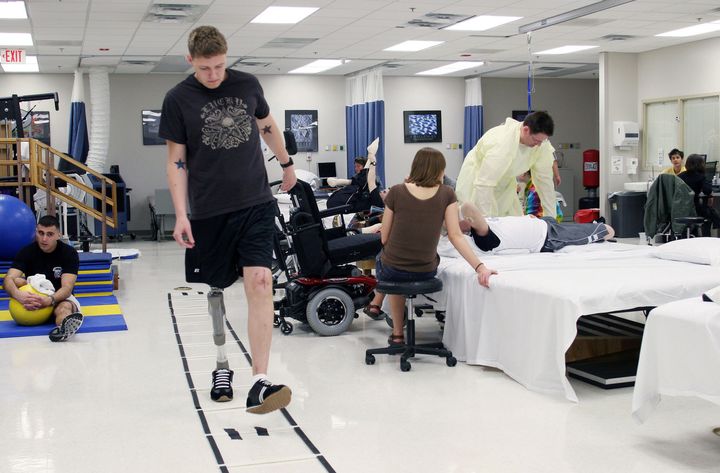
After a century of rehabilitating veterans, The Walter Reed Medical Center discharged its last patient on Saturday in preparation for its merger with the National Naval Medical Center, a move that will cost $1 billion more than originally anticipated, NPR reports.
Even before a 2007 Washington Post investigation found some severely wounded soldiers living amongst mouse droppings, cockroaches, stained carpets and cheap mattresses, Walter Reed had developed a strategic plan to relocate the historic hospital in order to innovate its offerings and save on building maintenance.
But, the cost of the merger has tripled from the original $900 million estimate, which means the government won’t actually start saving money on the endeavor for another seven years, according to NPR.
Still, for those getting life-saving treatment and learning to adjust to daily life after losing limbs, no dollar amount can be applied to what the cutting-edge facility in Bethesda, Md. will have to offer.
“Bringing together both the Army’s and Navy’s medical systems is akin to reuniting family,” wrote Marine Cpl. Tyler Southern, 22, a triple amputee, in a Washington Post editorial. “At Bethesda, medical professionals and staff fought for us to live, and at Walter Reed they taught us how to live.”
The new Walter Reed National Military Medical Center houses residents in fully furnished apartments and has a rock wall and indoor track, among other amenities, so those living there can implement what they learn during physical and occupational therapy sessions on their own, according to The Washington Post.
Such innovation falls in line with the center’s founding mission.
Named for Walter Reed, the military physician who discovered that mosquitoes transmitted yellow fever, the original facility was groundbreaking in that it brought together a medical hospital, research facility, an Army medical museum and Army research library onto one campus, when it opened in 1909, according to Stars and Stripes.
Now that the two medical staffs will work together, just across from the National Institutes of Health, the potential to endow professorships and recruit top military physicians to pursue groundbreaking findings in trauma care and prosthetics may increase,
John Chiles wrote in a Washington Post op-ed piece.
"It's kind of sad to see the gates close,” Army Reserve Spc. Chad Longell of Fort Meade, Md, told the Army News Service, “but it's the beginning of a new chapter for the Army and the patients here.”
WATCH related video: